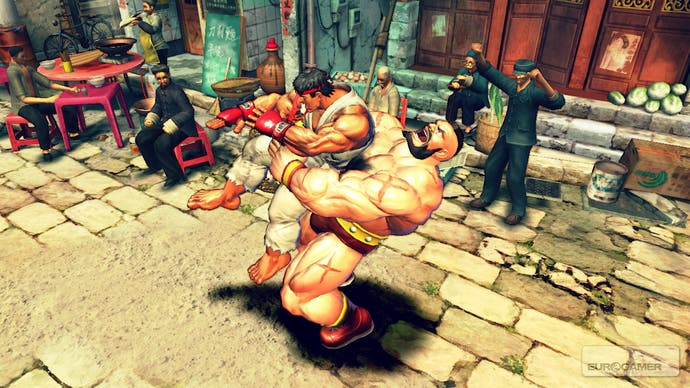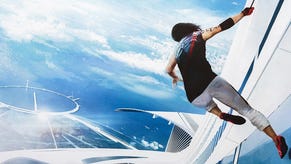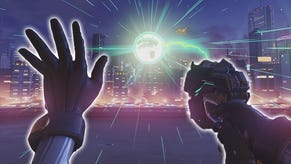Street Fighter IV
We play, while Yoshinori Ono talks Seth, console controls and online.
Ono points out that, as producer, he should probably be promoting the new characters, but his decision to highlight SF IV's connection to its predecessors reflects Capcom's belief that enticing "lapsed gamers" is the game's primary objective. Using Street Fighter II as a base, rather than III, we're told it's meant to be familiar but also different. The fighting system restores all the original characters' signature moves and many popular combos. Probably the most obvious fighting system change is the addition of Focus moves, which replace SF III's parries ("I think we lost a large portion of our audience and maybe scared them away from fighting games," Ono says ruefully about parries). To use Focus, you hold the medium punch and kick buttons together to charge a move. A fully-charged attack is an unblockable knockdown, and you can absorb one attack without being knocked off-balance while building it up. Ono hopes Focus will provide a bridge between attack and defence for higher-level players.
Also on the cards are Super moves, which are built up through combat along a four-stage meter below each character. These segments on their own will strengthen special moves like Ryu's fireball, but together they allow for the double-quarter-circle-forward Super move, which is much more dangerous. Meanwhile, taking hits builds up a Revenge meter next door, which powers up the even more devastating Ultra attacks. Other elements, like Super Cancels (cancelling your own special with a Super) also return. So while SF II veterans will find an easy way into the game through tried-and-trusted techniques, those with time and patience have more to uncover. Ono says that the animation has been tuned so that it's possible to read the other player's attacks to some extent.

Upon which note, the graphics are beautiful. "The driving artistic theme was a 2D painting coming to life before your eyes," says Ono, aiming to deliver what people "imagined and remembered of Street Fighter II" but giving the game a distinctive appearance. This is also apparent in level design; Chun-Li's streets level has people sitting around eating and hanging lanterns swaying in the breeze, Blanka's jungle jetty backs onto a lagoon overhung by dense vegetation and home to monkeys and birds hopping and swooping about, and Sagat's Thai barge sits in front of a gorgeous ocean sunset.
For storytelling, though, Capcom has decided to go with anime sequences, which will form prologues and game endings for each character, and we're shown a demonstration video featuring Ryu. It opens as the beat-'em-up's most iconic character lies prostrate in defeat as a fire-eyed Akuma taunts him about his restraint. A sequence of flashbacks shows how this echoes periods of Ryu's training, before he recovers his vigour and engages Akuma with attacks including a dragon punch. But just as he's about to put Akuma out of his growing misery with a fireball, Ken rocks up, berating Ryu for trying to finish their arch-enemy without him.

The action then cuts away to a waterfall cascading over the top of a mountain range. Having set the scene, the water's downward pour is suddenly ushered 90 degrees away from the cliff-face, showering the surrounding area as the seismic force of a huge and unseen punch distorts the environment. Then we see a silhouette of what looks like Gouken. "We're not ready to talk about him yet," Ono says.
The anime sequences should be jarring, but on this evidence it's a wise choice; they're exquisitely designed and should give inquisitive players ample incentive to explore the depths of each character's campaign. We also get to see a new promotional trailer - a tussle between Guile and Abel on an airstrip, replacing the sumi-e ink wash-painting style of the original Ryu/Ken trailer with a sandy style that's just as beautiful, cut with footage of the two characters going at it in-game.








